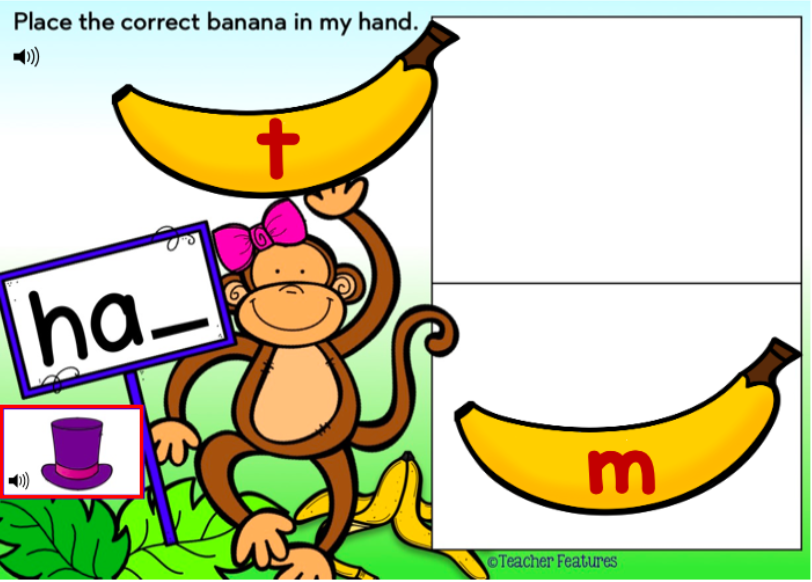What is Phonemic Awareness?
You may have heard that phonemic awareness is an essential building block for reading, but aren’t sure why. Phonemic awareness is the ability to hear, identify, and manipulate phonemes (the smallest units of spoken language). It is the primary predictor of early reading and spelling skills in kindergarten through 2nd grade.
Students who lack phonemic awareness may not even know what is meant by the word “letter sound”. They can usually hear well and name the alphabet letters, but they may have no connection to what letters represent. They may tell you the first sound in the word cat is “meow”.

Can your students tell you that cat has three sounds? Can they tell you that if you replace the /c/ sound with an /h/ sound you will get an entirely new word,hat? When students understand that spoken words are composed of discrete sounds it makes letter-sound connections possible. In other words…learning to read will be easier.
Looking for an easy way to begin?
An effective and fun way to practice phonemic awareness is by playing listening games. I listed some of my favorites below.
*Rhyme I Spy: “I spy something in this room that rhymes with label…
*Rhyme Riddles: What rhymes with clock and begins with /s/?
*Blending Onset & Rimes: c-ake tr-ick s-ing
* Rhyming Trip:“I’m going on a trip, and I’m taking a ________.” (cat, hat, mat, etc.)
* Thumbs Up/Thumbs Down: Say two words. Students listen and compare the words, determining if they rhyme.
Phoneme Isolation: Initial & Final Sounds
Why do I love to use games with my students? If learning is fun, students are engaged. My goal is for my students to barely notice they are working on skills. One of the ways I practice with my kiddos is with sound boxes like these:

Phoneme Blending & Segmenting
Students are able to identify the initial and final sounds in words, but have difficulty identifying all the sounds in a single-syllable word. This is the point where I work on medial sounds (the short vowel) in the word. Often times, I find that my students are able to blend sounds easier than segmenting sounds. Both segmenting and blending skills are very important to mastery of phonics skills, so it is important to work on these skills in unison.
I try to “mix it up” by using hands-on and digital resources with my small reading groups. I often use Boom Cards, because students love them AND they are easy for me- no prep and they record student data. Here are examples of resources I use:


Phoneme Manipulation is all about Listening
Next, I work on Phoneme Manipulation. This can be a difficult and tricky skill for kids, but mastery (or non-mastery) of manipulation skills is a telling indicator of student progress. Can students change pig into a new word by replacing /p/ with /w/? Now that you have wig, what happens when /i/ is changed to /a/? If you are told the new word is wag, your kiddo is ready to move on to new skills!
Okay, you say- my students are Phonemic Awareness experts and can identify all the letters/sounds of the alphabet. Now what? What do I teach next?



